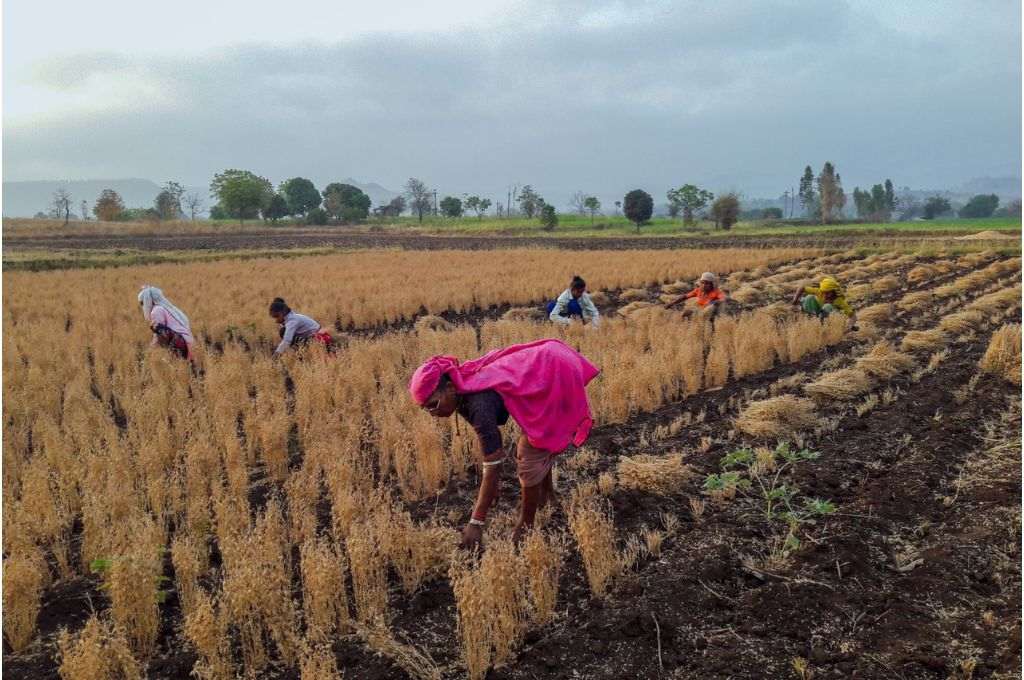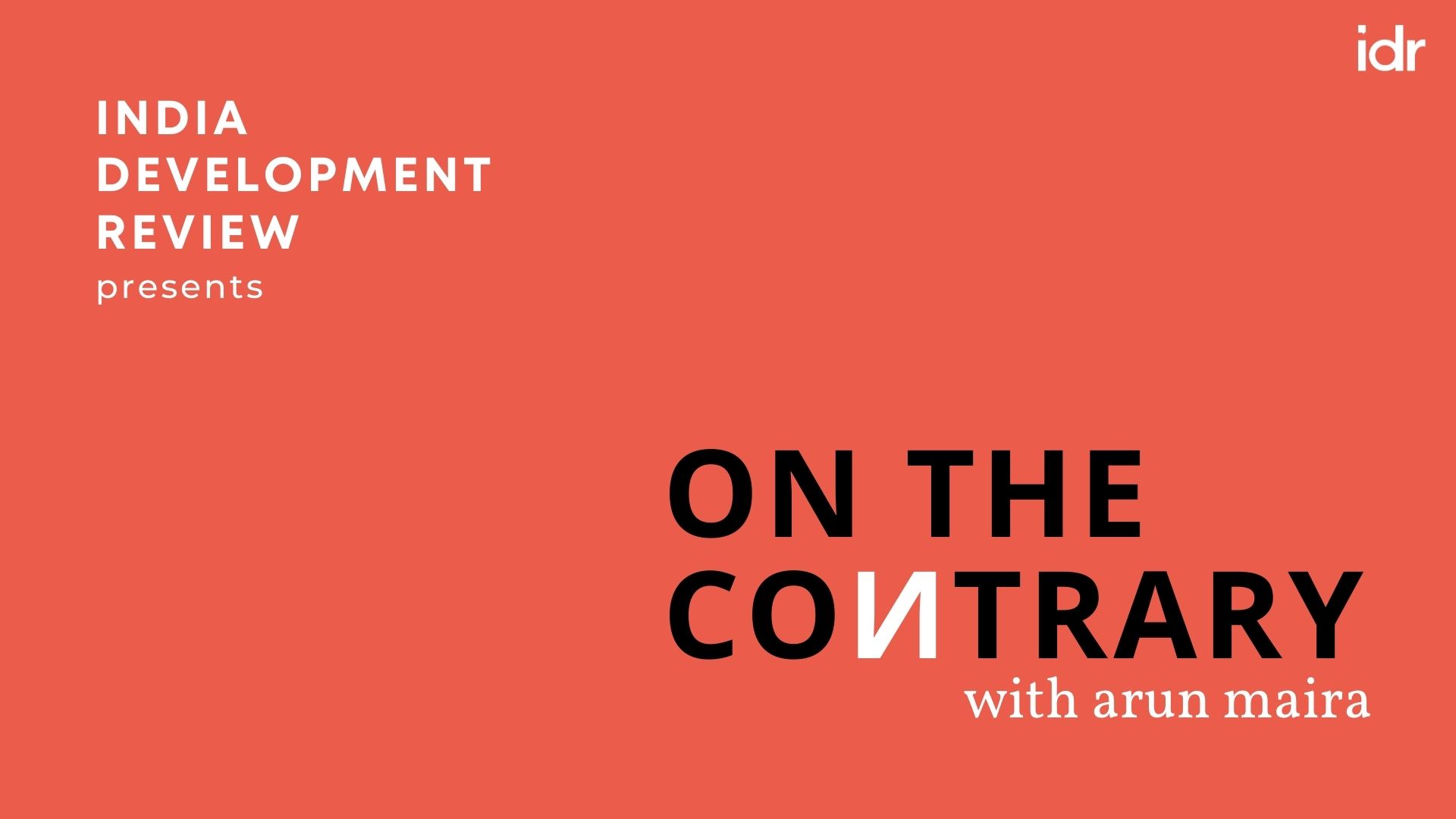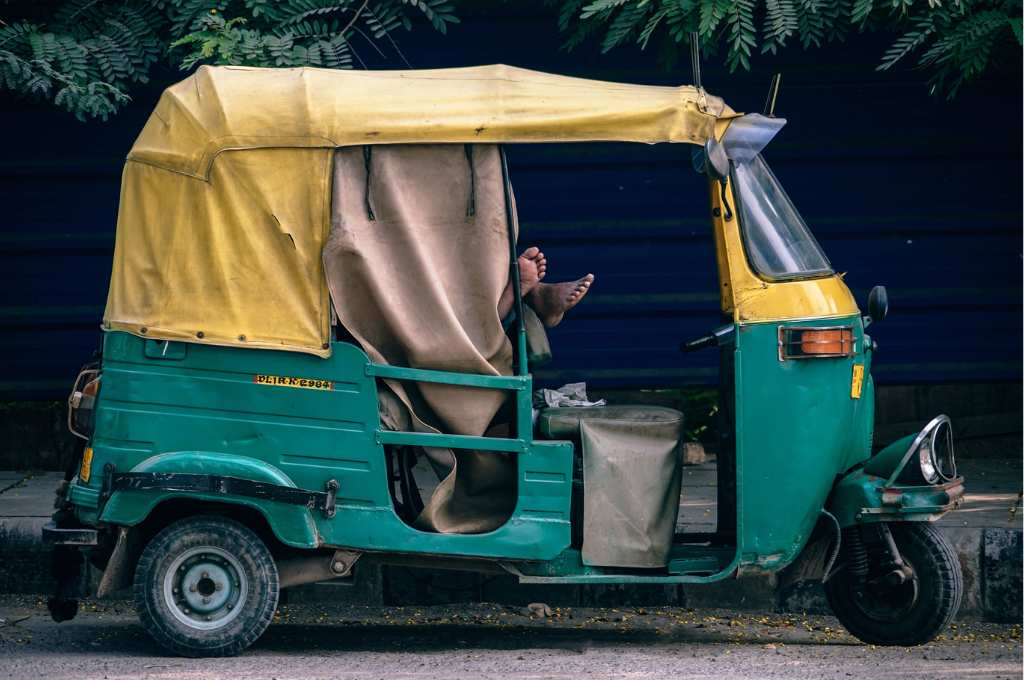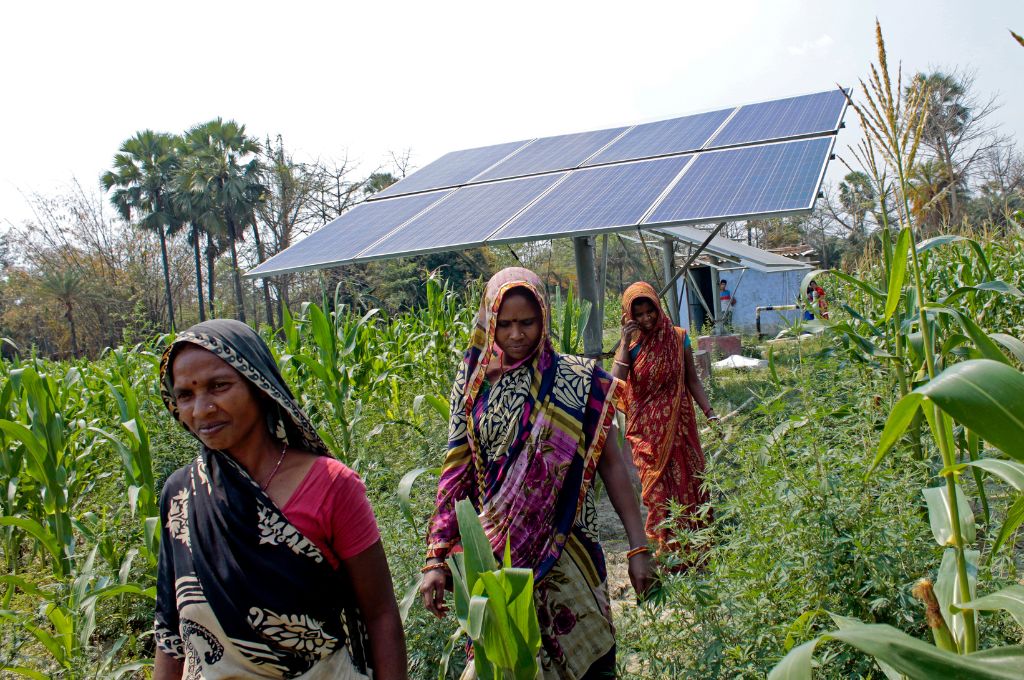Edited transcript of the episode:
00.35
Smarinita: When we talk about the impacts of the climate crisis, we talk about how air pollution, erratic weather, rising temperatures, and disasters are changing our spaces and our lives. There might also be conversation about how it’s affecting the most vulnerable—be it marginalised communities or those living near disaster-prone areas.
But we often tend to treat people at the grassroots as one big group with similar aspirations, responsibilities, and access to resources.
What often gets missed out in these conversations, or rather who gets missed out, are the women who are burdened to care for their homes, their children, and their families.
To explore the impacts of climate change on women, the solutions that are emerging, and how policies can make space for their voices, we have with us today on the show Archana Soreng and Bijalben.
Archana Soreng belongs to the Khadia Tribe from Odisha. She is one of the seven members of the United Nations Secretary General’s Youth Advisory Group on Climate Change. She is experienced in advocacy and research and is working to document, preserve, and promote the traditional knowledge and cultural practices of indigenous communities.
Bijal Brahmbhatt or Bijalben is the Director of Mahila Housing Trust (MHT). She has worked in the areas of formal and informal housing and habitats in urban India for more than 20 years. Her programmes have helped women participate in city-level initiatives to make cities more inclusive. Over the last several years, MHT has focused extensively on helping women build localised solutions for cooling in urban slums.
02.15
Smarinita: Bijalben, you’ve been working with women in the informal sector across urban slums for more than two decades now. What have you been seeing in terms of how climate change is impacting women in these communities?
Bijalben: So, actually, we have been working with poor women in the informal sector across India, and now also a little bit across the Global South, in Nepal and Bangladesh. And climate change is not only about disasters, but it is also about slow onset, potent stresses like heat or air pollution, or, for example, water resource management, because water scarcity is going to be one [issue]—it [already] is, and it’s going to be aggravated further because of climate change. Similarly, vector-borne [diseases] is one area, and flooding. [These] are the areas that we have been working on, especially in urban [areas].
So it’s a question of productivity, economic productivity, especially being impacted for women.
Most of these women are working from their houses—they’re home-based workers. And say the heat is much aggravated in their houses, and that actually impacts their productivity by around 30 percent in the hot [summer] season. I can give you one example where areas in Bihar where we have been working get flooded very often due to the Ganga overflowing in monsoon season. And they usually climb on top of their houses. And it’s the women who get down first and start cleaning up the muck due to the floods in the house. And then they get a snakebite. So you will eventually see that the mortality rate of women is increasing after such a flooding disaster because there are snakes in the muck. So it acts very differently for women who are more vulnerable. And, of course, due to vector-borne diseases breaking out, like malaria, dengue, chikungunya, all are going to increase, and [lead to] dual care burden [for the women]. So it’s a question of productivity, economic productivity, especially being impacted for women. Also, you know, things like mortality rate and care burden are certainly increased for women.
04.24
Smarinita: Thank you, Bijalben. Archana, do you want to speak a little bit about the communities you work in? How is climate change impacting them? How are women being impacted by the crisis versus the rest of the population?
Archana Soreng: I think one of the key things when we talk about the impacts of climate crisis from a lens of indigenous people and local communities and rural communities is that there’s still no mapping and in-depth studies on degrees of impacts of the climate crisis. And what I have felt and realised and observed is that we have a certain set of understandings in terms of what is impact, and we only cater to it. If I give you one example, when we are having a situation like floods, it’s a very critical situation in the coastal areas, like the houses are taken away. The communities are affected, and it is a very, very difficult situation for the communities in coastal areas. But people often fail to acknowledge how floods and rainfalls also impact communities in the plains, like the communities that are living on the plains who are dependent on agriculture. Having continuous, frequent rains in an inappropriate season also [leads to] the loss of agriculture, loss of livelihood, and specifically loss of forest-based livelihood for the indigenous and local communities. And having this regularly also pushes them into the verge of debt. So even if it is not a direct impact, like taking away of house, it is [a problem] of taking away of livelihood, which is also equally heavily impacted by the climate crisis.
The responsibility of taking care of the communities, the household work, again falls with the women.
Now when I talk about this, who is the one who is most impacted? It falls on the women and children, because forest-based livelihoods is one of the major sources of earning for the women. And it’s also a major source of money which enables their children to pursue education. The men of the family are forced to push forward for other jobs, like as labourers. Or [it forces them to] move out of the villages and go to the cities. And the responsibility of taking care of the communities, the household work, again falls with the women. And also this falls along with taking care of the forest. So that’s why it’s also very important to see how women are being affected by climate crisis.
07.14
Smarinita: Drawing upon that point, because women are more severely impacted by the climate crisis, are you both seeing them come up with climate solutions, either to kind of lessen the effect or to then adapt? Bijalben, could you talk a little bit about the women that you’re working with—what is their understanding of the issue [of climate change]? How are they working around its impact on their lives?
Bijalben: Some of the solutions may be much more traditional and in use. For example, if you are looking during the heat season, they may deploy food that reduces the impact of heat because it’s been a traditional solution. So without knowing or without understanding that climate change is going to exacerbate the heat situation, they deploy it because it has been a tradition. Women, for example, would drink more buttermilk, or probably use more onions in the food, especially during the hot season. These kinds of remedies have always been there traditionally.
Climate change would also need a little bit of long-term and intergenerational thinking.
But [in] some of the other climate areas—like air pollution, or say, for example, water scarcity, or say flooding and vector-borne disease—we have observed that because the women are so poor, they think extremely short term. So their energies will be concentrated on how to get water for the day, how to get the fees of your children, otherwise their schooling will be impacted, how to raise the resources so that you are ensured that the next meal in your family is there on the plate, and that is what really engages their attention. But climate change would also need a little bit of long-term and intergenerational thinking.
I think the other issue that we find, especially with the poor, is that the technocrats and the scientists actually make it [sound like] a very heavy jargon–based technical principle that the women are not actually able to understand. So one of the big jobs that we have been doing is to demystify the scientific language or technical language, so that the women can understand it extremely easily, and then plan their actions around it more specifically. And making it more relevant is one big job that we are trying to do with them.
09.48
Smarinita: Can you also give us a few examples of the solutions that you’re seeing roll out on the ground?
Bijalben: For example, air conditioners will not work for the poor just because they are so costly, and they may not even have access to a proper [power] grid connection. So, some of the things that we have been trying to do, for example, is trying to work on technologies which cool down their houses, but which are not as costly or unaffordable as air conditioners, and which will suit their other needs. So, we have been trying to work on cool roofs, for example, we have been trying to issue housing loans where there are passive design solutions. For example, if you have wall overhangs or window overhangs [that] protrude out, the direct sunrays don’t fall on your window, then the heat gets reduced by one or two degrees. So, such solutions we have been trying out, [though] not only in heat. For example, as water becomes scarce, we have also been propagating in areas where they already have pipe water connection, things like sprinkler taps, which are very, very cheap, but will reduce water usage by almost 50 percent. We have mapped that so that they do not further contribute to the issue of water scarcity. So, we’ve been trying to do this with the women.
12.04
Smarinita: Archana, Bijalben touched upon how expertise, especially when it comes to climate action, often flows top-down. It tends to be very technical, and oftentimes the proposed solutions may not even be the solutions communities need. So, how have you been seeing indigenous communities respond to the climate crisis, and think of solutions?
Archana Soreng: Before going on to what communities are doing, and what are the solutions we are witnessing or observing, I think it’s also very important to examine how we want to see solutions. Because for me, I think, one of the key things which I have been advocating is [that] the way of living of indigenous people itself is a solution. So for me, when we talk about solutions, it’s not only what indigenous people or local communities do, but who they are, and how they have the relationship with nature and how they have [kept up with] their way of living.
For indigenous people and local communities, nature and land is the source of identity, culture, tradition, and language.
How do we expect communities to speak about this, when there have been years of inferiorisation and making them feel low and bad about it? It needs to come from a place of respect, it needs to come from a place of solidarity, and then [we can] seek solutions or [forge] willingness to work together. And that’s why I keep my narrative in three aspects, which is like, how have indigenous people been leading life with nature, what is their world view? The second is, what are the eco-friendly practices [they follow], or their livelihood or lifestyle practices? And the third is the governance structure. And that’s why when I talk about the world view, for indigenous people and local communities, nature and land is the source of identity, culture, tradition, and language, unlike [land being a] commercial commodity, as seen by other people. And for us it’s also very intrinsic, because the loss of our forest, loss of our nature, and loss of land is also loss of ourselves and identity.
And the second thing, if we speak about their way of living and eco-friendly practices, then I think one of the key things has been the way they wake up in the morning, [for a long time] they have been brushing their teeth with the twigs of the forest, and they have been eating twigs of the trees, they have been eating on the leaf plates and leaf bowls made by themselves. All of these have always existed in the communities, but that’s what it is, it’s been looked down upon.
And then I think the important thing comes down to governance, how indigenous people are contributing, and what the solution is like. They have those governance structures though—community-led forest protection practices in the villages where they take decisions of protecting the forest, where they have been going patrolling to the forest and taking care of the forest. Like there’s [something known as] Thengapalli practices–thenga means stick, palli is turn. So these practices are often seen in Nayagarh district of Orissa, in Mayurbhanj district of Orissa, in Devgarh district of Orissa, and other parts of Orissa. Women have been protecting the forest, and women are going in turns of four and patrolling the forest. And they take the stick with them to patrol the forest. After they come back, they keep the stick in front of the next home. So in that way the stick as well as the entire responsibility rotates among the women in the communities and the village. And that’s why I feel that it’s really, really critical that if this community’s rights are not recognised, they are not safe and secure. They always live in the fear of eviction and displacement.
So I think it’s really important for me to emphasise on the importance of rights recognition of indigenous people and local communities over the land, forest, and territory as a solution. It’s also important to see how preservation, promotion, and protection of the traditional knowledge and practices of indigenous communities are solutions to climate action.
We do not have adequate representation of communities in national spaces, decision-making spaces, or international spaces for that. So I think it’s really important also to not homogenise indigenous people and local communities. Rather [we need to] make sure that we have adequate representation from different regions and different contexts.
16.54
Smarinita: I think there’s a great point you’re making, Archana, that climate solutions have to be hyperlocal, which is to say that one can’t come up with solutions unless one knows the local context, the history, the culture of a particular region, right? Because there is a tendency, especially in the climate space, to have experts come in and say, ‘This is what must be done,’ whereas we know that a lot of that knowledge probably already exists locally.
Bijalben, Archana spoke a little bit about the need for more representation of different communities. What are other things you think should happen at a policy level to actually help reduce the impacts of climate change, or at least address some of it on vulnerable communities, especially women?
Bijalben: So I think currently, so far as the Indian government policies are concerned, it’s largely focused only on renewable energy, which is talking about mitigating the impacts of climate change. How are the communities adapting, because climate change is happening fast. And while we do try to mitigate [climate change], it may not get entirely mitigated. So how do you also adapt along with mitigation? And eventually everything that we do in terms of climate change has to lead towards the resilience building of these communities. Resilience would mean not only being able to survive the impact of climate change, but also to be able to thrive and continue thriving in the wake of climate change. So we need policies which address all the three issues.
The second thing that I feel [should happen is] locally led adaptation strategies should be given prominence, which is what Archana ji was also saying. So, currently it’s an extremely top-down approach.
There is a lot of talk around climate change. However, there are not as many resources flowing really down to the ground.
Third thing I have been observing is that there is a lot of talk around climate change. However, there are not as many resources flowing really down to the ground. So it has been mapped that whatever resources are being allocated, hardly 10 to 14 percent really go down to action and on-the-ground solutions. So I think that’s a very big issue that we really need to take cognizance of.
And the fourth thing, I do very strongly agree that there are no representational spaces. So what the communities are doing with the help of nonprofits like ours is to claim these spaces in policymaking. Like, some of the women that we have been working with are actually setting up multi-stakeholder groups at city levels where they have the city governments, scientists, technologists, and themselves talking to each other on these issues and meeting on a regular basis. But these are spaces which have been created by us and which are claimed by the women. But there are no invited spaces by the government, or the business houses in India where they come by invitation, they do not have to claim it. So we still have to come up with that kind of an architecture in the policymaking space.
19.59
Smarinita: Absolutely, Bijalben. And everything you’ve suggested, these are all practical things that can be done—they aren’t out of reach. Finally, I want to ask: Both of you belong to very different generations of women. Is there anything specific to how your generation is reacting to the crisis? Bijalben, if you would like to go first.
Bijalben: What really caught their attention, I must say, is that they [the women] were very clear that they did not want their children to live the kind of lives that they were leading. And when they understood that it’s going to become even worse because of climate change, that’s what really got them into action. And we have been trying to also train these women to take evidence locally as much as possible, and start using technologies to capture evidence.
However, one of the issues with the women in our generation is that, as compared to some of the younger adolescent girls, their adaptation to technology is a little bit slow. Of course, one, because smartphones are not very accessible to women, more or less smartphones are in the hands of men. So one, they don’t have access to it. And second, also, they are more into traditional ways of collecting data, probably physical surveys, and do really need some push to move over to technologies, which is much easier for the younger generation, adolescent girls.
But again, the issue, especially where women are concerned, is that mobility for older women is much easier. So if you want to go out, if you want to represent, if you want to talk, then, you know, probably it’s easier for the older women who are married. But for adolescent girls, especially safety being an issue in slums, their mobility is highly arrested. So if you want to make these kinds of representations from, you know, younger women, from adolescent girls, then we need to also start addressing the issues of mobility and safety to ensure their public participation.
22:07
Smarinita: Thank you, Bijalben. Archana, do you see your generation responding differently?
Archana Soreng: I think, for us, it’s like, [we can] no longer wait for impacts of climate crisis. We are witnessing and living with the impacts of climate crisis. And we have also seen loss of lives. And daily [we] wake up to this. That’s why we see how the youth movements on climate action and environmental groups have been very, very vocal about impacts of climate crisis and what needs to be done on the policy levels and grassroot levels. Youth have been on the streets also and in decision-making spaces and are also showing the skills and expertise. But I think there’s still denial and [lack of] belief in youth leadership. I think that needs to change.
I think it’s really important to have safe and enabling spaces for young people. And that’s really, really critical. I would also like to link speaking up and leadership with things on ground. If my rights over my land are not recognised, and I am living under the threat of eviction, displacement, then how will I be able to actively and efficiently speak up or take up a leadership position? So that’s why when we talk about leadership of indigenous people and local communities, those things also need to be taken into consideration. The third thing, which I also feel is really, really important, is to emphasise on casteism, structural racism—we really need to put an end to this and make systematic changes.
I also would like to agree with what Bijal ji said in terms of fund allocation, because we all have been seeing these discussions around climate finance. But we barely see that the climate finance is translated to the communities, and specifically communities on ground. As we are leading up to COP 27, it’s really important that the fund allocation for all of this climate [change] mitigation, adaptation, and resilience reaches out to people on the ground, the women on the ground. [That] is what I believe. And I think one of the last things which I would like to say is really critical when we are talking about mitigation, adaptation, and resilience is that somewhere or the other preparedness gets diluted. I think the element of preparedness also needs to be taken into consideration, that how we can make sure that we are prepared for all of these crises.
24:52
Smarinita: While mitigating climate change is crucial, for people already facing the consequences of the crisis in terms of loss of livelihoods, loss of habitat, loss of health, the climate emergency is very much a part of their reality today. And so adapting to the crisis and building resilience is extremely important as well.
As policymakers work towards India’s climate action goals, there is a need to make space for more voices on the table—those belonging to people who share a close relationship with the land they live on, and those who perhaps understand nature and its patterns better than anyone else. Most importantly, we need to make space for women’s voices to be heard, voices that are more often than not left out of the conversation entirely.
—
Read more
- Why gender matters: Climate change and agriculture in India
- India’s climate policies are failing its women and children
- Moving gender equity to the mainstream of climate action
- A village tackles cyclones: Why are women in Odisha regrowing a forest?
- How a tribal community In Odisha is battling climate change with traditional farming
- The unintended consequences of solutions to climate change
- Women’s action towards climate resilience for urban poor in South Asia | Bangladesh, India, Nepal





